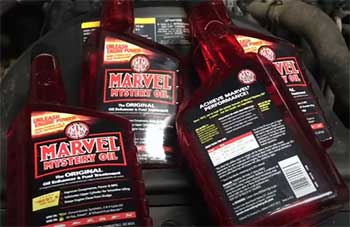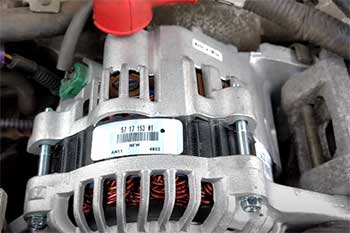If you’re looking for a reliable, high-quality dash cam that won’t break the bank, the Minolta Dash Cam (MNCD37) is a fantastic choice.
Whether you’re a daily commuter, a road trip enthusiast, or just someone who values safety, this dash cam delivers crisp 1080p footage, a wide-angle lens, and smart features like motion detection and emergency recording.
After using it for weeks, I can confidently say it’s one of the best investments I’ve made for my car. Stick around as I share my experience, break down the pros and cons, and compare it to other brands. Trust me, by the end of this review, you’ll want one too.
My Experience With The Minolta Dash Cam
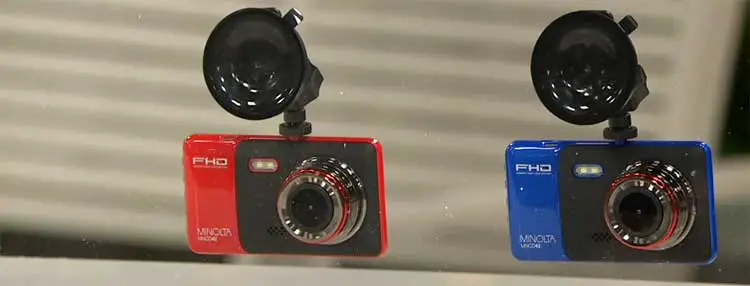
Let me start by saying this: I’ve tried a few dash cams over the years, but the Minolta Dash Cam has been a game-changer. From the moment I unboxed it, I was impressed by how sleek and compact it looked.
Setting it up was a breeze—I attached the suction cup mount to my windshield, plugged in the USB cable, and it was ready to go. The 3.0” IPS LCD screen made it easy to adjust the angle and ensure everything was in frame.
The first time I took it out for a spin, I was blown away by the video quality. The 1080p HD footage was crystal clear, and the 120-degree wide-angle lens captured everything from the car in front of me to the sidewalks on either side.
I felt like I was reliving my drive in vivid detail. The colors were vibrant, and even in low-light conditions, the footage was surprisingly good.
One feature that really stood out to me was the motion detection. I parked my car in a busy lot, and the dash cam automatically started recording when it sensed movement nearby. It gave me peace of mind knowing that even when I wasn’t in the car, it was still keeping an eye out.
The emergency recording feature also came in handy during a close call on the highway. When another car suddenly swerved into my lane, the built-in G-Sensor triggered the dash cam to save the footage automatically. I didn’t have to worry about losing that crucial moment—it was safely stored on the 16GB MicroSD card.
Overall, using the Minolta Dash Cam has been a seamless experience. It’s reliable, easy to use, and packed with features that make it worth every penny.
Pros of The Minolta Dash Cam
Let’s talk about why this dash cam stands out from the crowd. Here are the top reasons I think you’ll love it:

- Stunning Video Quality: The 1080p HD recording is a game-changer. Whether you’re driving through a scenic route or navigating city traffic, the footage is sharp, detailed, and vibrant. The 120-degree wide-angle lens ensures you don’t miss a thing, capturing everything from lane changes to pedestrians crossing the street.
- Smart Features for Safety: The motion detection and emergency recording features are lifesavers. Literally. The motion detection starts recording as soon as it senses movement, which is perfect for parking lots or busy streets. The G-Sensor automatically saves footage during sudden stops or collisions, so you never lose critical evidence.
- Easy to Use: Setting up the Minolta Dash Cam is a breeze. The suction cup mount is sturdy and easy to adjust, and the 3.0” LCD screen makes it simple to check your settings and playback footage. Even if you’re not tech-savvy, you’ll have no trouble getting this up and running.
- Compact and Discreet: Unlike some bulky dash cams, the Minolta is sleek and unobtrusive. It doesn’t block your view or clutter your dashboard, which is a huge plus for me.
- Great Value for Money: Considering the features and performance, the Minolta Dash Cam is a steal. It’s packed with premium features without the premium price tag.
Cons of The Minolta Dash Cam
No product is perfect, and the Minolta Dash Cam does have a few drawbacks:
- Limited Storage: The included 16GB MicroSD card is decent, but it fills up quickly, especially if you’re recording in 1080p. I recommend upgrading to a larger card if you plan on using it frequently.
- No Wi-Fi Connectivity: Unlike some higher-end models, this dash cam doesn’t have Wi-Fi or app connectivity. Transferring footage requires removing the MicroSD card, which can be a bit inconvenient.
- Average Night Vision: While the daytime footage is excellent, the night vision is just okay. It gets the job done, but don’t expect the same level of clarity as daytime recordings.
Maintenance Tips For Your Minolta Dash Cam
To keep your dash cam in top shape, here are some tips I’ve learned:
- Regularly Clean the Lens: A dirty lens can affect video quality. Use a microfiber cloth to gently wipe the lens every few weeks.
- Check the MicroSD Card: Over time, the card can wear out or get corrupted. Format it every month to ensure it’s functioning properly, and consider upgrading to a higher-capacity card if needed
- Secure the Mount: The suction cup mount is sturdy, but it can loosen over time. Make sure it’s securely attached to avoid the dash cam falling while driving.
- Update Firmware: Check Minolta’s website for firmware updates. These updates can improve performance and add new features.
- Avoid Extreme Temperatures: Prolonged exposure to extreme heat or cold can damage the dash cam. If you live in a hot climate, consider using a sunshade to protect it.
How Minolta Compares To Other Brands?
When it comes to dash cams, there are plenty of options out there. Here’s how the Minolta Dash Cam stacks up against some popular competitors:
- Minolta Dash Cam Vs. ROVE Dash Cam

When comparing the Minolta Dash Cam to the ROVE Dash Cam, one of the first things you’ll notice is the difference in design and usability.
The ROVE Dash Cam boasts a sleek, compact build that blends seamlessly into your car’s interior.
While this minimalist aesthetic appeals to many, it sacrifices screen real estate—ROVE models typically lack a built-in display, requiring you to transfer footage to a phone or computer for review.
In contrast, the Minolta Dash Cam features a 3.0” IPS LCD screen, allowing you to instantly check recordings without needing additional devices.
This makes Minolta far more convenient for drivers who value quick access to their footage.
Another key difference lies in pricing. The ROVE Dash Cam tends to be pricier due to its advanced features like GPS integration and cloud connectivity. These extras are great if you need detailed location data or remote access to your videos, but they may not justify the higher cost for casual users.
On the other hand, the Minolta Dash Cam focuses on delivering essential features—like loop recording, G-Sensor technology, and motion detection—at a much more affordable price point. For most drivers, Minolta provides everything necessary without unnecessary frills.
In terms of video quality, both cameras record in 1080p full HD, but the Minolta Dash Cam edges out slightly with its 120-degree wide-angle lens, offering a broader field of view compared to ROVE’s standard 110-degree lens.
This wider coverage ensures you capture more of the road, which can be crucial in accident scenarios.
- Minolta Dash Cam Vs. NEXPOW Dash Cam
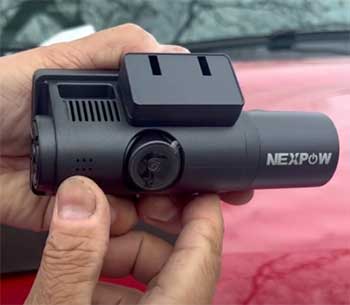
The NEXPOW Dash Cam is another popular option, particularly praised for its dual-lens system, which records both front and rear views simultaneously.
If having rear coverage is a priority for you, then NEXPOW might seem like the obvious choice.
However, keep in mind that dual-lens systems often come with compromises in video quality or frame rate.
The Minolta Dash Cam, while single-lens, excels in capturing sharp, vibrant footage with excellent color accuracy, making it ideal for drivers who prioritize front-facing clarity over rear visibility.
One area where Minolta clearly outperforms NEXPOW is ease of use. Many users report that setting up the NEXPOW Dash Cam can be tricky, especially when configuring the rear camera wiring. Additionally, its smaller screen (usually around 2.0”) makes reviewing footage less intuitive.
The Minolta Dash Cam, with its larger 3.0” display and straightforward setup process, offers a hassle-free experience right from the start.
Battery life is another factor worth considering. The NEXPOW Dash Cam relies heavily on constant power from your vehicle, and its internal battery has limited capacity for standalone operation.
Meanwhile, the Minolta Dash Cam’s internal battery, though modest, provides enough juice for short-term use during emergencies or when switching vehicles. This added flexibility gives Minolta an edge in practicality.
- Minolta Dash Cam Vs. Vital Dash Cam
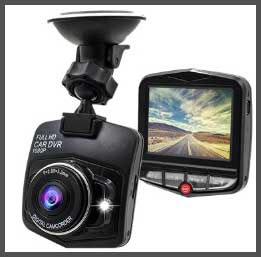
The Vital Dash Cam markets itself as a budget-friendly option, appealing to cost-conscious buyers.
While it does deliver decent performance for its price, it falls short in several areas when compared to the Minolta Dash Cam.
For instance, the Vital Dash Cam’s video quality, though advertised as 1080p, often appears grainy in low-light conditions.
The Minolta Dash Cam, on the other hand, maintains impressive clarity even at night, thanks to better sensor technology and image processing.
Durability is another critical aspect where Minolta shines. Some users have reported issues with the suction mount of the Vital Dash Cam losing grip over time, leading to shaky footage or accidental dislodging.
In my experience, the Minolta Dash Cam’s mount remains secure and stable, even after months of daily use. Its ability to swivel and lock into place also adds versatility, ensuring optimal positioning regardless of your windshield’s curvature.
Feature-wise, the Vital Dash Cam lacks some of the advanced functionalities found in the Minolta Dash Cam. For example, Minolta’s motion detection and G-Sensor are highly responsive, automatically saving important clips when triggered.
With the Vital Dash Cam, these features are either less reliable or entirely absent, leaving you vulnerable in situations where evidence is critical.
Frequently Asked Questions (FAQ)
While there are many great brands, Minolta stands out for its balance of quality, features, and affordability. It’s a solid choice for most drivers.
The main downside is limited storage and the need to regularly manage footage. Some models also lack advanced features like Wi-Fi connectivity.
Simply mount it on your windshield, plug it into your car’s power outlet, and adjust the angle. The dash cam will start recording automatically when you turn on your car.
While it won’t directly lower your premiums, having a dash cam can provide evidence in case of an accident, potentially saving you from higher rates.
Wrapping Up
After weeks of using the Minolta Dash Cam, I can confidently say it’s one of the best investments I’ve made for my car. It’s reliable, easy to use, and packed with features that make every drive safer and more enjoyable.
Whether you’re a daily commuter or a road trip enthusiast, this dash cam is a must-have. Don’t wait—get yours today and experience the peace of mind that comes with knowing you’re always protected.
